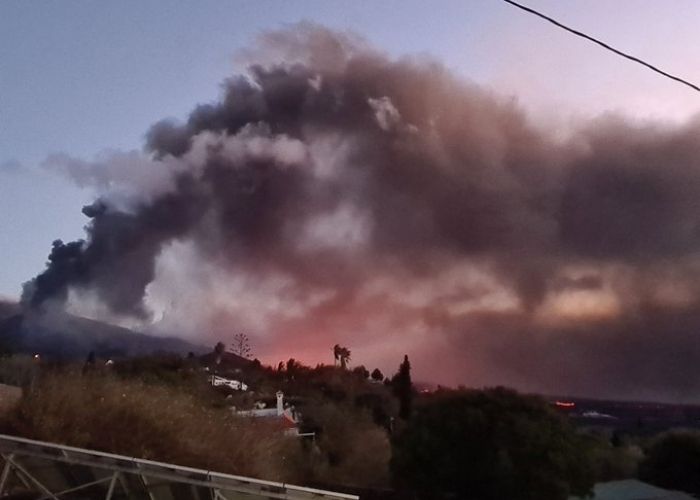LA PALMA – The end of the volcanic eruption on La Palma is still not in sight after seven weeks. This is according to scientific data, which was reported on Sunday by the emergency committee monitoring the volcano. However, in recent days, the eruption seemed to have abated somewhat.
On September 19 at 3.13 pm local time, life on the peaceful island of La Palma changed. The earth opened up in an area of El Paso known as Cabeza de Vaca, in the Cumbre Vieja system. At that time nothing foresaw the eruption would still be active after 7 weeks or the devastation it would cause. Although most people want the eruption to stop once and for all, scientists who follow evolution maintain that volcanic processes are changeable and can exhibit phases of greater or lesser activity, without the eruption having stopped.
Explosive activity
This was the case last week when the volcano seemed to have stopped, after weeks of rumbling and lots of lava emissions that fed the existing lava flows and affected a new surface. However, on Saturday, at around 6.00 pm, explosive activity resumed and lava rose to the surface again. Volcanologist Stravos Meletlidis, from the National Geographic Institute (IGN) explained that the input of magmatic material was greater than that of the previous days and when this material reaches the cone, it is normal to observe an eruptive column, sometimes explosive and sometimes effusive, with lava flows coming out. The expert does not want to speak of a reactivation of the volcano because it has never been inactive. Nor does he consider the term “stationary” adequate to describe the activity observed in recent days.
This is normal in a volcanic process, stresses the specialist, who even claims that the reduction in seismic activity alone is not decisive, if other factors that could foresee the end of an eruption are not taken into account.
Sulphur deposits
Elemental sulphur deposits have appeared for the first time in the La Palma volcanic eruption. This could indicate a “clear change” in the dynamics of the eruption of La Cumbre Vieja volcano.
The Volcanological Institute of the Canary Islands (Involcan) reported this development on social media. The reaction with hydrogen sulphide (H2S) to form sulphur would imply that the magmatic component of the gas is decreasing and the emission of H2S is increasing. This development does not indicate the end of the eruption, but rather a clear change in its dynamics, the Canary Islands Volcanological Institute stresses in messages on social media.
Air quality improves
López also pointed out that air quality on the island continues to improve. Although particulate matter (PM10) levels are still too high in the Los Llanos de Aridane area. Winds are also pushing the gas and ash cloud, at an altitude of 3,500 metres, to the south and southwest. However, this is beneficial for aviation.
Tourist attraction
Visitors continue to visit La Palma in large numbers over the weekend so that last night there was no empty space at the lookout points from which the volcanic eruption can be seen
From Tajuya to the viewpoint of El Time, in Tijarafe, the number of visitors was large and to their satisfaction the black cloud of ash that had spread over the Aridane valley in the morning was over the sea, making the cone and its activity perfectly visible. Also clearly visible on Sunday was the fajana or lava delta that formed when the lava fell into the sea.


